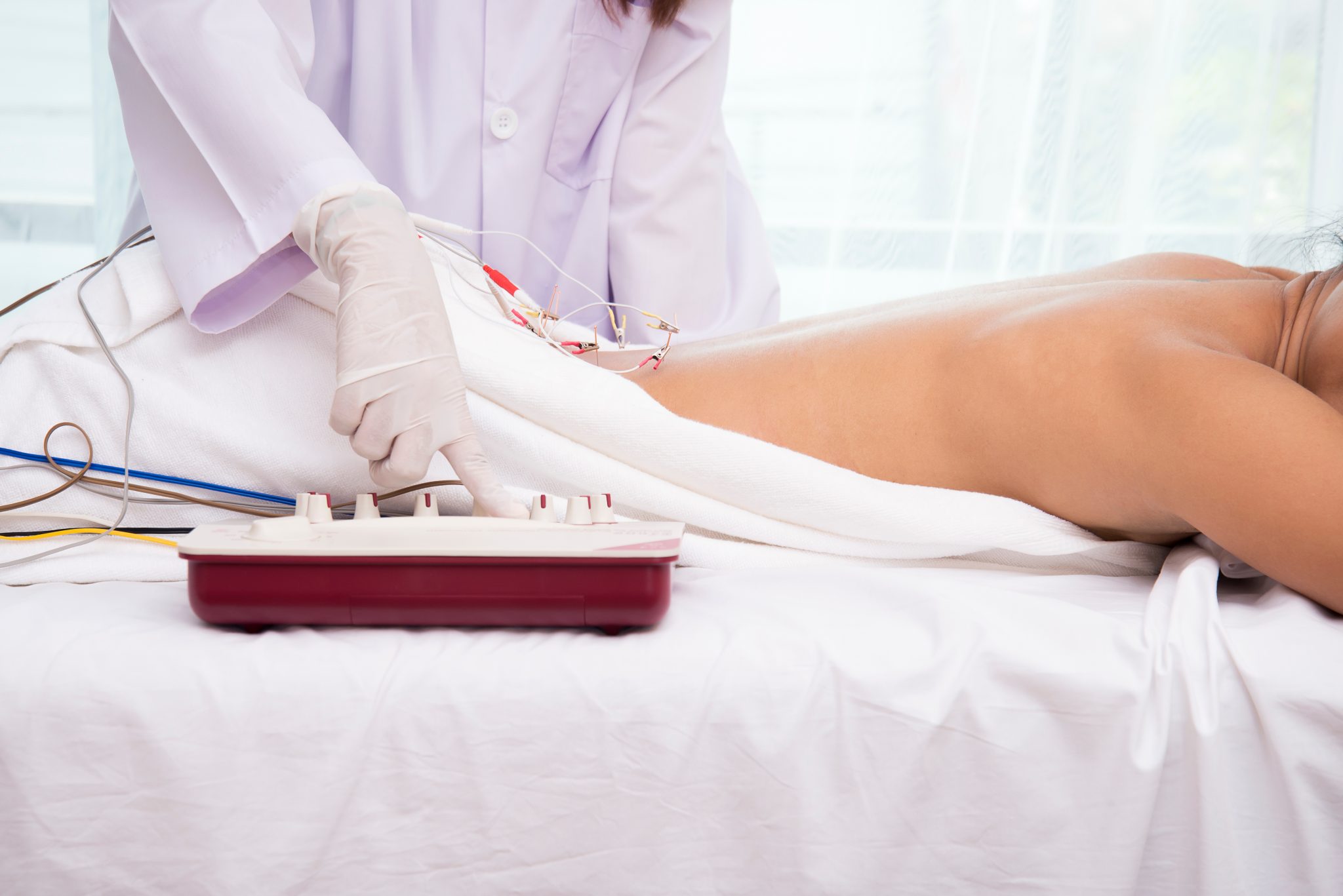
Electric Acupuncture and Its Benefits
Electric acupuncture (or EA) often seems intimidating or scary to patients when they see it for the first time, but it is completely safe and has tremendous benefits that enhances the effects of your acupuncture treatment.
What Is Electric Acupuncture?
The acupuncturist will attach small clips to the shaft of the needle and then run a light current through the needle to the body. There is a minimum of two needles attached to clips so a positive and negative current can flow between the two points. The intensity and frequency of the current running through the needle is adjusted based on what your acupuncturist is trying to achieve.
EA does not hurt. You may initially feel a mild buzzing, vibration, tapping or twitching at a certain needle insertion point but it should never be painful or uncomfortable. Usually after a few minutes the body will get acclimated to the current and feel nothing at all. Many patients feel more relaxed after electric acupuncture and describe a zen-like mood.
EA is completely safe when used correctly. There are certain circumstances that EA is not suggested which is why it is important to see a licensed acupuncturist who is trained on the safe use of EA.
How Does Electric Acupuncture Work?
Studies are still being done in the field of EA acupuncture, since EA has only been around since the 1950s (Langevin et al., 2015). What scientists already know is that the current applied to certain points stimulates a neurological effect – whether that is the release of endorphins or it is activating the sympathetic nervous system, which is the part of the central nervous system that is in charge of “rest and digest” (Indiana University, 2017).
EA’s activation of the nervous system is why it’s great for all kinds of pain management, neuropathies and circulatory problems (Indiana University, 2017). By signaling the body to release endorphins or triggering an immune response, EA can help reduce pain. EA can also improve circulation in certain areas of the body including the ovarian blood flow, the uterine blood flow and the renal blood flow (Stener-Victorin et al., 2003).
Electric stimulation applied to certain points can also trigger muscles to contract and release to reduce muscular pain that is due to overuse or trauma (Langevin et al., 2015). This is similar to stimulating a motor point of a muscle.
What Can Electric Acupuncture Help With?
Below are just some of the areas where EA has been shown to be effective:
- Pain management – from injury, arthritis, inflammation, etc.
- Neuropathy disorders – such as diabetic neuropathy and carpal tunnel
- Fertility and hormone balance – EA improving blood flow to the reproductive
- organs thus improving hormone delivery and can reduce cortisol, the stress
- hormone
- Digestive motility – EA can improve motility or inhibit motility in cases of
- IBS, Crohn’s or Ulcerative Colitis
- Hypertension – By stimulating the sympathetic nervous system, EA can help
- decrease blood pressure
- Stroke recovery – EA is extremely effective in activating the motor cortex and the sensory cortex post stroke
When applied correctly, EA can help you achieve better results than conventional acupuncture but it is not necessarily recommended for everyone (even if you have some of the conditions listed above). It is important to allow your acupuncturist to do a full and comprehensive intake and diagnosis to determine if EA is the best treatment strategy for you. It is also important to find an acupuncturist who is well trained because while EA is generally safe, different frequency and intensities are more beneficial for different conditions.
References:
Indiana University. (2017, March 16). Electroacupuncture releases stem cells to relieve pain, promote tissue repair, study finds. ScienceDaily. Retrieved November 8, 2018 from www.sciencedaily.com/releases/2017/03/170316174225.htm
Langevin, H. M., Schnyer, R., MacPherson, H., Davis, R., Harris, R. E., Napadow, V., Wayne, P. M., Milley, R. J., Lao, L., Stener-Victorin, E., Kong, J. T., Hammerschlag, R., Executive Board of the Society for Acupuncture Research (2015). Manual and electrical needle stimulation in acupuncture research: pitfalls and challenges of heterogeneity. Journal of alternative and complementary medicine (New York, N.Y.), 21(3), 113-28.
Stener-Victorin, E., Kobayashi, R., & Kurosawa, M. (2003). Ovarian blood flow responses to electro-acupuncture stimulation at different frequencies and intensities in anaesthetized rats. Autonomic Neuroscience, 108(1-2), 50-56.
Zhang, R., Feng, X. J., Guan, Q., Cui, W., Zheng, Y., Sun, W., & Han, J. S. (2011). Increase of success rate for women undergoing embryo transfer by transcutaneous electrical acupoint stimulation: a prospective randomized placebo-controlled study. Fertility and sterility, 96(4), 912-916.


